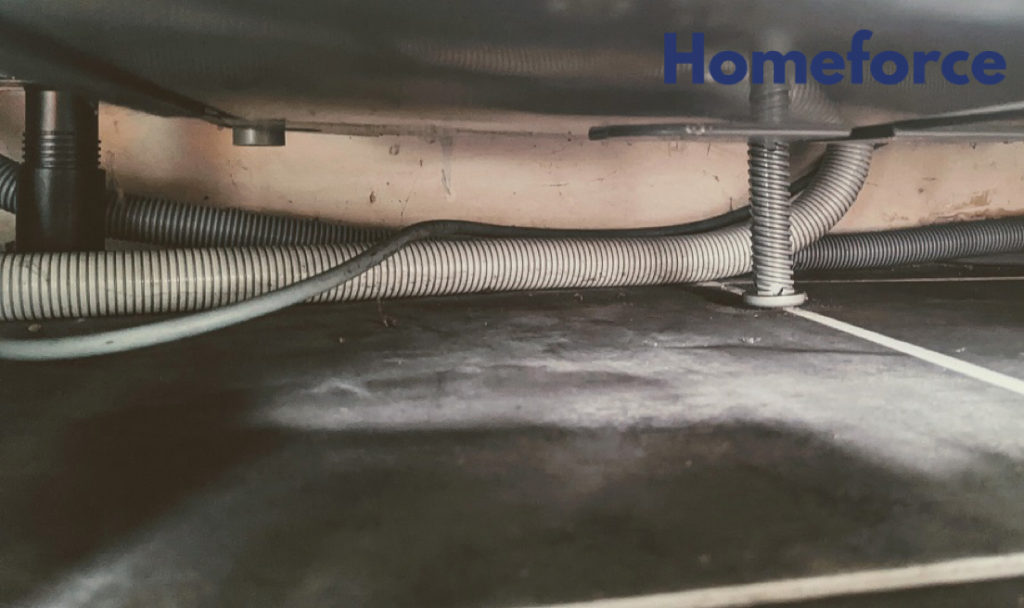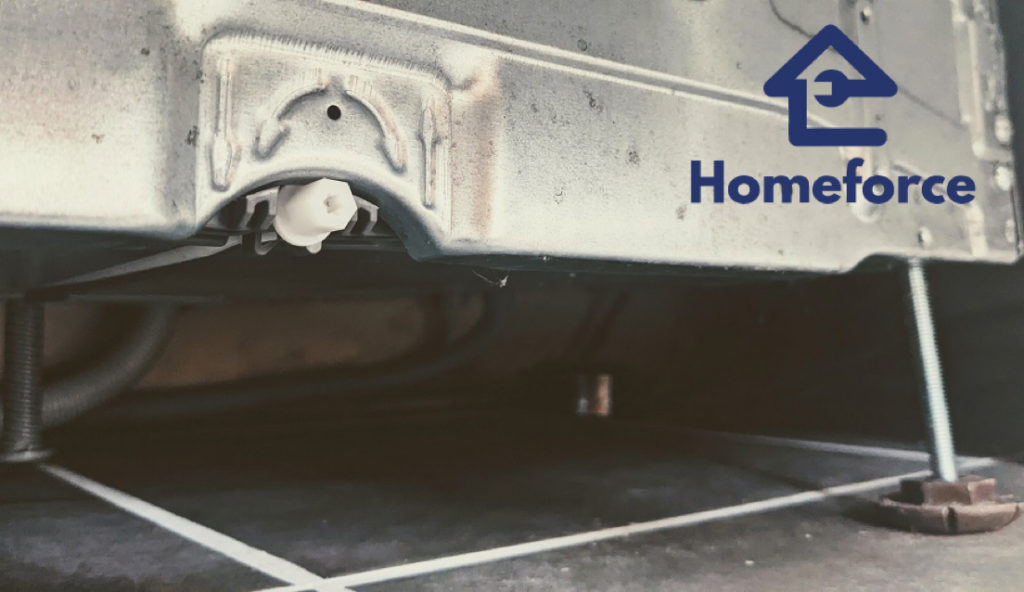Written On
Wed 13th July 2022
Written By
Homeforce
Category
Guides
Share This
Getting the dishes done is such an important part of the day so you can relax and enjoy some family or me-time.
However, problems with your dishwasher are just not something you anticipate or think will happen! and are not how you want to spend your evening especially if you haven’t got an appliance plan.
So is your dishwasher leaking from the bottom? If so, you’ll want some quick solutions! Join us to find out the common problems and what you can do.
Here’s the handy quick takeaway list so you can start troubleshooting now.
- A plumbing issue
- The timer could be broken
- A leaking drain pump
- A faulty pressure switch
- The wash pump may be damaged or broken
- An issue with the pressure chamber
- Adding too much rinse aid
With the quick answer covered, so we can understand a little more easily why your dishwasher might be leaking from the bottom, let’s start with a bit of background
Dishwasher leaking from the bottom
If you find yourself wiping up a pool of water constantly from the bottom of the dishwasher, especially if it has started to be a regular occurrence, you’ve most likely got a leak to deal with.
Not only is pooling water a mess to deal with but it can also be dangerous. You’ll be pleased to know that some problems can be dealt with fairly simply if you have the DIY know-how.
However, always be aware that repairs to electrical appliances can cause accidents. For anyone who would rather not tackle problems such as leaky dishwashers, you will need to call a specialist dishwasher repair technician.
Make sure any power supplies are disconnected before you begin any work on a home appliance, including a dishwasher leaking from the bottom.
So once you’ve made sure the power supply is off what’s the next thing to do?
“Make sure any power supplies are disconnected before you begin any work on a home appliance,”
Look at the manual
Owners’ manuals are full of useful information regarding your make and model of dishwasher.
Make sure you always keep it in a safe place or if it’s disappeared into a kitchen drawer of doom, then most manuals are available online.
We’ve linked below some of the main user manuals for dishwasher manufacturers. Hopefully, these will include your models. Or just get in touch with us and we can help:
Will have more information on their websites or you may be able to chat directly with a technician online.
So let’s head into some of the most likely common causes of a dishwasher leaking from the bottom.
1. A plumbing issue
One of the first things to do is check the water supply. So you can easily establish if it is a leak and not just minimal water build-up, wipe the plumbing fittings with a paper towel first so it’s easier to detect if there’s a problem.
Check out the waste water drain pipe to find out whether it’s functioning properly. It could be that if it’s too far into the standpipe it might cause a leak.
A drain pipe inlet should always be 65 cm above the ground and should be set at a maximum of 15 cm in the standpipe.
If you notice any water flowing from the tap then you will need to call a professional plumber.
You may like to consider a plumbing plan to save you from these kinds of issues in the future.

2. The timer might be broken
If your dishwasher is one of the older types, it could be that it has a mechanical timer.
These are prone to get stuck when the dishwasher is filling, which leads to too much water in the machine causing an overflow.
If this is the problem you will need to either replace the part yourself or contact a dishwasher repair service to replace it.
3. A leaking drain pump
A leaking drain pump could be the reason for water coming out of the bottom of your dishwasher.
The job of the drain pump is to drain out the water and if it’s faulty you may find a pool of water underneath your machine.
This could be a big job and is usually best for properly trained repair technicians as if the drain pump is leaking it will require investigating and taking apart.
This is mainly to check to see if anything has become lodged in it such as food debris or even broken glass.
4. A faulty pressure switch
If you notice leaking on the floor from the bottom of your dishwasher, it could be the pressure switch which checks the water in your machine is at the right level.
If it’s not working properly and doesn’t respond, then it can cause leaking. If you have a multimeter you may be able to check for any damage yourself.
Set the meter to ‘ohmmeter’ mode and place the tester tips on the terminals of the pressure switch. Then by lightly blowing, you can check the contacts. As you blow it should turn off and on and you need to check that the sensor goes between ‘on’ and ‘off’.
It’s worth knowing that older washing machines have this type of pressure switch, but newer models will most likely have an electronic one which would need to be investigated by a repair technician.
5. A wash pump problem
The wash pump is where the pressure water comes from which then goes to the spray arms inside your machine. If this is faulty there will most likely be excess water pooling under your dishwasher.
You will need to know how to remove the access cover as the wash pump is located there. Consult your manual for how to remove it.
The wash pump can be extremely sharp so do not attempt this unless you are wearing proper protective gloves.

6. There might be a problem with the pressure chamber
After it’s been used for a while the pressure chamber often gets clogged up with debris such as food and even broken glass if you’ve recently had a glass smashing accident in your dishwasher.
It’s the pressure chamber which tells the machine the water level is correct. It fills with water and then forces air into a tube, which in turn activates the pressure switch.
If it’s clogged up with leftover food or other debris it may cause the machine to overflow and you might notice water leaking from the bottom.
It is possible to clean out the pressure chamber by unplugging the tube which connects to the pressure switch.
Using a large syringe filled with water you can then put it in the tube.
Push the plunger of the syringe deep into the pipe. You will need to press very hard for this method to work.
You may need to repeat it several times to clean the chamber efficiently.
7. Adding too much rinse aid
Although rinse aid can help make your dishes and especially glassware sparkling clean, adding too much rinse aid can grate too much foam.
This can then lead to an overflow which means you might notice water escaping from the bottom of the machine.
Before you load your dishwasher check the manual and also make sure the rinse aid is at the proper level in the machine. If you think any has leaked out into the machine.
Then dry it off thoroughly with paper towels to stop it foaming up during the washing cycle.
Fix your dishwasher leaking from the bottom… The simple solution
We hope this has helped you to solve the problem of your dishwasher leaking from the bottom. If you’re still having trouble or just want someone else to deal with it then just give us a call and we can help.
And the easiest solution is to cover all your appliances in the future. So consider our appliance cover plan for your appliances and plumbing cover plan for total peace of mind and hassle-free living!